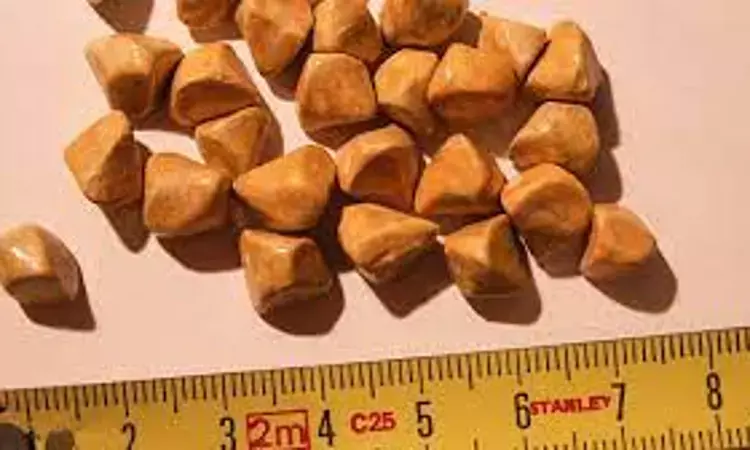- Home
- Medical news & Guidelines
- Anesthesiology
- Cardiology and CTVS
- Critical Care
- Dentistry
- Dermatology
- Diabetes and Endocrinology
- ENT
- Gastroenterology
- Medicine
- Nephrology
- Neurology
- Obstretics-Gynaecology
- Oncology
- Ophthalmology
- Orthopaedics
- Pediatrics-Neonatology
- Psychiatry
- Pulmonology
- Radiology
- Surgery
- Urology
- Laboratory Medicine
- Diet
- Nursing
- Paramedical
- Physiotherapy
- Health news
- Fact Check
- Bone Health Fact Check
- Brain Health Fact Check
- Cancer Related Fact Check
- Child Care Fact Check
- Dental and oral health fact check
- Diabetes and metabolic health fact check
- Diet and Nutrition Fact Check
- Eye and ENT Care Fact Check
- Fitness fact check
- Gut health fact check
- Heart health fact check
- Kidney health fact check
- Medical education fact check
- Men's health fact check
- Respiratory fact check
- Skin and hair care fact check
- Vaccine and Immunization fact check
- Women's health fact check
- AYUSH
- State News
- Andaman and Nicobar Islands
- Andhra Pradesh
- Arunachal Pradesh
- Assam
- Bihar
- Chandigarh
- Chattisgarh
- Dadra and Nagar Haveli
- Daman and Diu
- Delhi
- Goa
- Gujarat
- Haryana
- Himachal Pradesh
- Jammu & Kashmir
- Jharkhand
- Karnataka
- Kerala
- Ladakh
- Lakshadweep
- Madhya Pradesh
- Maharashtra
- Manipur
- Meghalaya
- Mizoram
- Nagaland
- Odisha
- Puducherry
- Punjab
- Rajasthan
- Sikkim
- Tamil Nadu
- Telangana
- Tripura
- Uttar Pradesh
- Uttrakhand
- West Bengal
- Medical Education
- Industry
Choledochoscopic gallbladder-preserving cholecystolithotomy effective option for gallstones

The recurrence rate of gallstones after choledochoscopic gallbladder-preserving cholecystolithotomy is low, and most patients with recurrence are asymptomatic or have only mild symptoms suggests a recent study published in the Surgery.
Due to the influence of traditional Chinese culture, many cholelithiasis patients refuse to undergo cholecystectomy. This has prompted surgeons to consider a new treatment option for gallstones, which preserves the gallbladder, termed as choledochoscopic gallbladder-preserving cholecystolithotomy. In this study, we reviewed the clinical outcomes of 23 years of single-center application of choledochoscopic gallbladder-preserving cholecystolithotomy.
A total of 5,451 patients with chronic cholelithiasis were selected from 1992 to 2011 as per the inclusion criteria for the choledochoscopic gallbladder-preserving cholecystolithotomy study, and clinicopathological and follow-up data were collected from 4,340 patients who underwent successful choledochoscopic gallbladder-preserving cholecystolithotomy. The endpoints of the follow-up were recurrence of stones, loss to follow-up, patient death, removal of the gallbladder for other reasons, or end of follow-up in December 2015.
Results:
- All 4,340 cases underwent choledochoscopic gallbladder-preserving cholecystolithotomy with a mean procedure time of 79.6 ± 35.4 minutes, among which 3,511 (80.9%) received at least 1 follow-up.
- The recurrence rate of gallstones gradually increased with increasing follow-up duration, with a recurrence rate of 0.83% within 1 year after surgery and a maximal cumulative recurrence rate of 7.94% at 23 years.
- The 5-year cumulative recurrence rate of gallstones in the age group ≤20 years was 16.80%, which was significantly higher than those of other age groups, and the 5-year recurrence rate in the single gallstone group was 2.87%, which was significantly lower than that in the multiple gallstone group.
- Age and number of gallstones were independent risk factors for gallstone recurrence after choledochoscopic gallbladder-preserving cholecystolithotomy.
The recurrence rate of gallstones after choledochoscopic gallbladder-preserving cholecystolithotomy is low, and most patients with recurrence are asymptomatic or have only mild symptoms. Age and number of gallstones were independent risk factors. Choledochoscopic gallbladder-preserving cholecystolithotomy is a safe and effective surgical option for gallstone removal in patients who do not wish to undergo cholecystectomy.
Reference:
Jingshan Liu, Xingyi Zhu, Qikang Zhao, Kunquan Huang, Donghai Zhou, Xiaotong Zhang, Zhaoya Gao, Siyao Liu, Jin Gu. A new operation for gallstones: Choledochoscopic gallbladder-preserving cholecystolithotomy, a retrospective study of 3,511 cases, Surgery, Volume 172, Issue 5, 2022. Pages 1302-1308, ISSN 0039-6060. https://doi.org/10.1016/j.surg.2022.08.008.
Dr. Shravani Dali has completed her BDS from Pravara institute of medical sciences, loni. Following which she extensively worked in the healthcare sector for 2+ years. She has been actively involved in writing blogs in field of health and wellness. Currently she is pursuing her Masters of public health-health administration from Tata institute of social sciences. She can be contacted at editorial@medicaldialogues.in.
Dr Kamal Kant Kohli-MBBS, DTCD- a chest specialist with more than 30 years of practice and a flair for writing clinical articles, Dr Kamal Kant Kohli joined Medical Dialogues as a Chief Editor of Medical News. Besides writing articles, as an editor, he proofreads and verifies all the medical content published on Medical Dialogues including those coming from journals, studies,medical conferences,guidelines etc. Email: drkohli@medicaldialogues.in. Contact no. 011-43720751


